Oryuheon House [Korea Quality] / 오류헌 [한국관광 품질인증/Korea Quality]
9.6Km 2023-04-13
18-15, Gireumaje-gil, Andong-si, Gyeongsangbuk-do
Oryuheon House, located near Imhaho Lake in Andong, Gyeongsangbuk-do, offers a chance to stay in a historic house from the Joseon period. The house, also known as Mogwa House, was built by Kim Won-jung, the third son of Sukjong-era rector of the National Academy Kim Bang-geol, when he formed a family of his own in 1678. It was designated as the National Folk Cultural Heritage No. 184. The door’s wooden frame and the open floor space exemplify the beauty of the literati house of the Joseon period, while the sarangchae (men’s quarters) and daemunchae (gate quarters) showcase the sophisticated architecture of the era. Anchae (women’s quarters) retains its original appearance, while the sarangchae was rebuilt in 1920. The construction of the Imha Dam in 1990 resulted in the house’s relocation to its present location.
The owner of the house resides in anchae and sarangchae. Guests have access to a space that includes a 2-kan room, which can accommodate up to 4, an open floor space, and a bathroom. Cooking is prohibited in the house, but guests can make use of a grill located on a small yard reserved for the guests. Korean-style breakfast, including menus like chicken porridge or lotus leaf rice, are offered free of charge in the morning. Nearby sights include the water sports activities in Imhaho Lake, Manhyujeong Pavilion, Hahoe Village, and Dosanseowon Confucian Academy.
Escuela de Protocolo de Andong (안동예절학교)
10.0Km 2023-04-07
Toegye-ro 1333-5, Waryong-myeon, Andong-si, Gyeongsangbuk-do
+82-54-841-0511
En la Escuela de Protocolo de Andong se pueden aprender las etiquetas y los modales tradicionales de Corea. Se encuentra ubicada en la ciudad de Andong, una región histórica que conserva la cultura confuciana y las tradiciones del pasado. La institución también ofrece clases interactivas de la ceremonia del té; para aprender a tocar instrumentos musicales como el janggu (tambor pequeño con forma de reloj de arena) y el gayageum (cítara de 12 cuerdas); participar en los juegos folclóricos, el yunnori (lanzar palos al aire) y el neoltwiggi (balancín); y otras muchas actividades culturales, como aprender la danza de máscaras, elaborar artesanías en papel tradicional hanji, preparar platos típicos, realizar la ceremonia de la boda tradicional y practicar deportes acuáticos en el río Nakdonggang. El lugar también es famoso porque en sus cercanías se encuentran otros destinos turísticos como la Academia Neoconfuciana Dosan Seowon y el Museo de la Ciencia Forestal.
Hakbongjongtaek [Korea Quality] / 학봉종택 [한국관광 품질인증]
10.7Km 2023-04-13
2830-6, Pungsantaesa-ro Seohu-myeon, Andong-si, Gyeongsangbuk-do
+82-54-852-2087, +82-10-6811-1106
'Hakbong Head House is the head house of the Uiseong Kim clan and was originally built near Sogyeseodang Village School by Kim Gwang-chan, an 8th-generation descendant of Hakbong Kim Seong-il, in 1762. In 1964, the house was moved to its current location.
The main building (bonchae) was extended from a ‘ㅁ’-shaped structure to a ‘巳’–shape structure. The anchae (women’s quarters) consists of a daecheong (main floored room) measuring 2-kan (a unit of measurement referring to the distance between two columns) on the right, an anbang measuring 2-kan on the left, and kitchen at the end. The upper part of the low-ceilinged kitchen has a gobang (storeroom) in which household goods used to be stored. The daecheong is large compared to the overall size of the house because head houses usually held many ancestral rites.
The Hakbong Head House has an impressive modern garden that was created during construction work carried out when the house was relocated after the Japanese colonial era. The well-maintained garden with its fantastically-shaped trees and rocks also serves as a venue for musical concerts on a regular basis. Guests will surely be fascinated to find out about the history of the people who once inhabited this house and dedicated themselves to the country in times of trouble.
Bap Jal Haneun Jip (밥잘하는집)
11.5Km 2021-03-26
31, Gwiyeori-gil, Andong-si, Gyeongsangbuk-do
+82-54-852-0010
It is a place where you can enjoy various Korean dishes. This Korean dishes restaurant is located in Andong-si, Gyeongsangbuk-do. The representative menu is beefbulgogi.
Yedam (예닮)
11.7Km 2021-03-30
78-28, Gwiyeori-gil, Andong-si, Gyeongsangbuk-do
+82-54-842-3131
A restaurant frequently introduced in Korean gourmet programs. The best menu at this restaurant is set menu with grilled salted mackerel. This Korean dishes restaurant is located in Andong-si, Gyeongsangbuk-do.
Aldea Gunja de Andong (Sitio Arqueológico de Ocheon) (안동 군자마을(오천유적지))
11.9Km 2024-04-30
Gunjari-gil 29, Waryong-myeon, Andong-si, Gyeongsangbuk-do
La rama Ye-an del fundador del clan Gwangsan Kim, Hyo-ro Kim, creó esta aldea, y desde entonces sus descendientes han vivido aquí. En 1974, cuando se construyó la presa de Andong, la aldea fue transladada desde la zona de Yean-myeon hasta Waryong-myeon, también en Andong, manteniendo su forma original. Entre esos dos puntos, están los puntos culturales del pabellón Takcheongjeong y la residencia Hujodang. En la sala de exhibiciones del pabellón Sungwongak se pueden encontrar extraños archivos que relatan la historia de la familia. Algunos de esos documentos que se exponen son registros familiares, documentos inmobiliarios y registros sobre los sirvientes. Entre esos escritos, hay 7 diferentes que se muestran en 429 piezas.
Pabellón Takcheongjeong
Fue construido en 1541 por el jefe de la rama Ye-an del clan Gwangsan Kim. El pabellón es único y diferente a otros. Permanece como un tesoro y punto cultural muy importante. Durante la dinastía Joseon, el famoso calígrafo Ho Han le puso su nombre actual.
Residencia Hujodang
Esta residencia perteneció al jefe de Ye-an. La fecha exacta de su construcción se desconoce, pero fue realizada por Bupil Kim, quien vivió entre 1516 y 1577. La estructura fue construida separada de la casa principal. Los cuarteles anexos fueron divididos en áreas exteriores e interiores, siendo Hujodang la parte exterior.
Imhaho Gisa Sikdang(임하호기사님식당)
12.6Km 2021-04-09
8, Seonchakjang-gil, Andong-si, Gyeongsangbuk-do
+82-54-822-4929
There are a variety of side dishes, so you can enjoy different foods. This Korean dishes restaurant is located in Andong-si, Gyeongsangbuk-do. The representative menu is kimchi stew.
Byeolcheongung (별천궁)
12.9Km 2021-03-30
141, Bongjeongsa-gil, Andong-si, Gyeongsangbuk-do
+82-54-857-4168
It is a restaurant with a hanok interior. This restaurant's signature menu is set menu with grilled salted mackerel. This Korean dishes restaurant is located in Andong-si, Gyeongsangbuk-do.
Hakgasan Chamma Sikdang(학가산참마식당)
12.9Km 2021-04-09
677, Bukpyeong-ro, Andong-si, Gyeongsangbuk-do
+82-54-868-7456
It is a good house with delicious dishes including fresh yams, where side dishes are cooked every morning. This Korean dishes restaurant is located in Andong-si, Gyeongsangbuk-do. The most famous menu is bulgogi.
Suaedang [Korea Quality] / 안동 수애당 [한국관광 품질인증]
13.0Km 2023-04-13
1714-11, Sugogyonggye-ro Imdong-myeon, Andong-si, Gyeongsangbuk-do
+82-54-822-6661
'Suaedang Traditional House was built by Ryu Jin-geol, also known by his pen-name of Suae, in 1939. This hanok-style house consists of three buildings that measure 29-kan (a traditional measurement that corresponds to the space between two columns) in total.
The main room, or jeongchim (7-kan at front and 2-kan at sides), has a half-hipped roof, and forms a‘ㄱ’-shape with the storeroom (10-kan at front), which also has a half-hipped roof. Originally located at 612 Sugok-dong, Andong-si, the house was relocated from a slight slope to a flat piece of land due to the construction of Imha Dam in 1987. Consequently, the Jeongchim was rebuilt at a lower level than before.
The Suaedang was renovated by modernizing the old-style facilities including the kitchen, toilets, and washroom without changing their external features, while the rooms and daecheongmaru (main floored room) were decorated with red clay and natural paint. Suaedang, with its beautiful panoramic view of the lake, was designated as Gyeongsangbuk-do Cultural Property No. 56.
![Oryuheon House [Korea Quality] / 오류헌 [한국관광 품질인증/Korea Quality]](http://tong.visitkorea.or.kr/cms/resource/29/2706129_image2_1.jpg)

![Hakbongjongtaek [Korea Quality] / 학봉종택 [한국관광 품질인증]](http://tong.visitkorea.or.kr/cms/resource/87/2579587_image2_1.jpg)
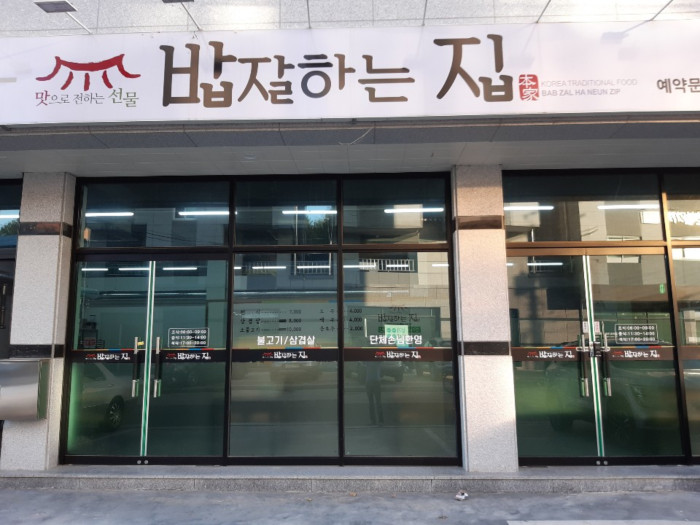
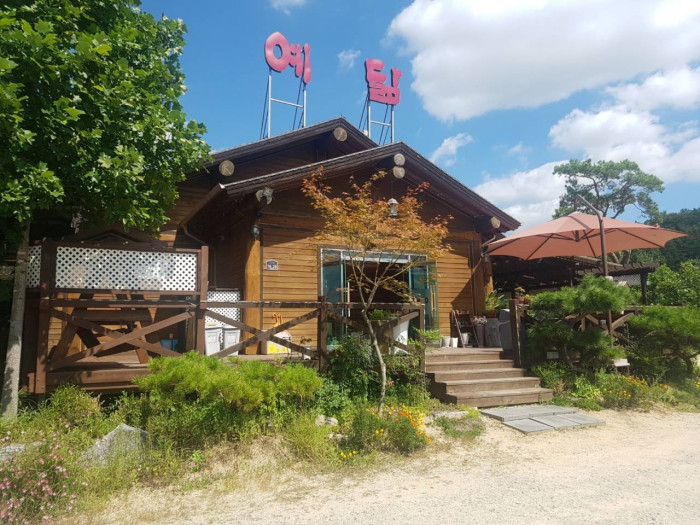
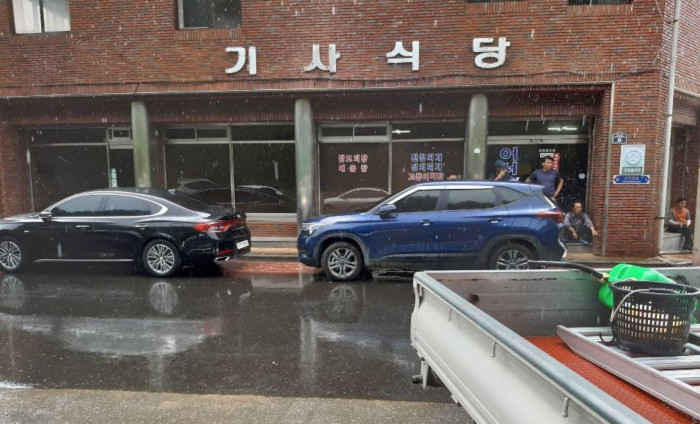
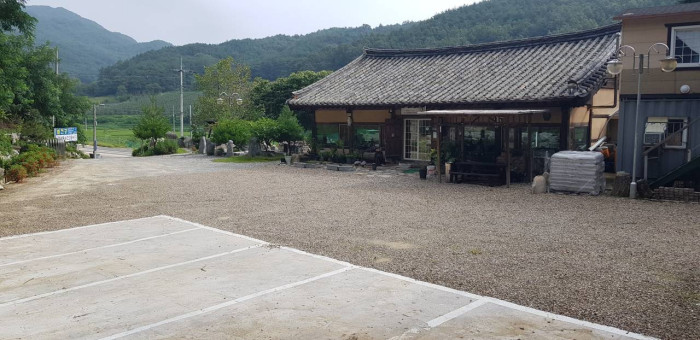
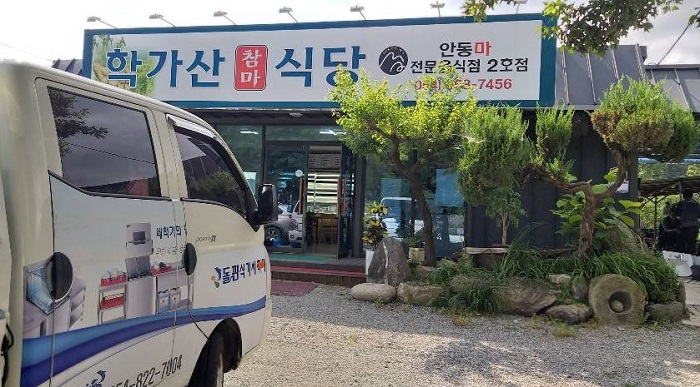
![Suaedang [Korea Quality] / 안동 수애당 [한국관광 품질인증]](http://tong.visitkorea.or.kr/cms/resource/88/2528888_image2_1.jpg)
 Español
Español
 한국어
한국어 English
English 日本語
日本語 中文(简体)
中文(简体) Deutsch
Deutsch Français
Français Русский
Русский